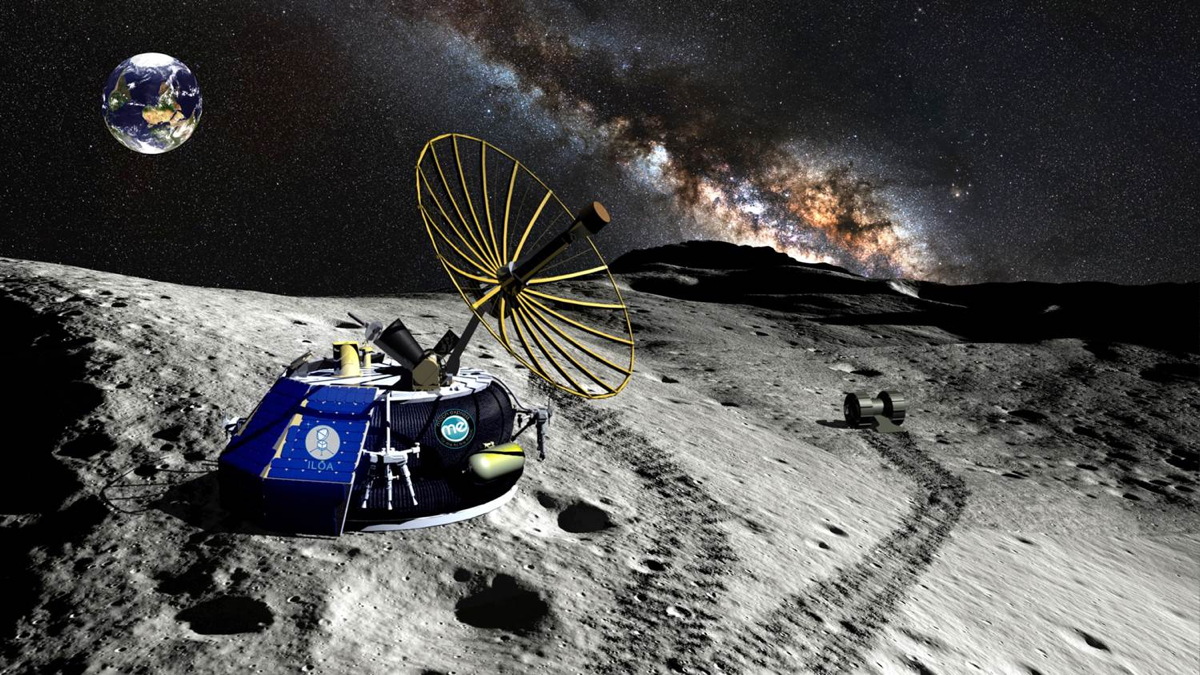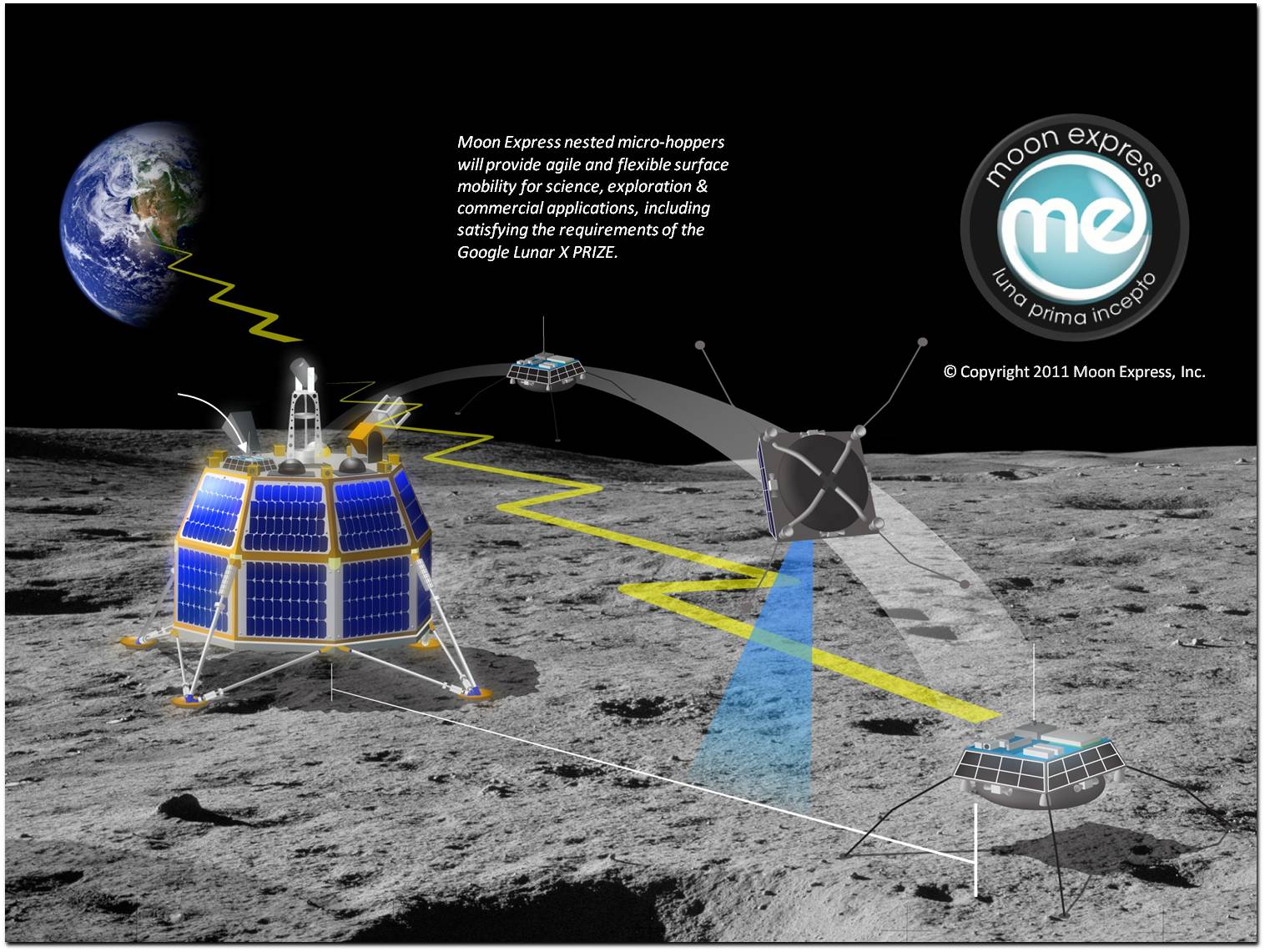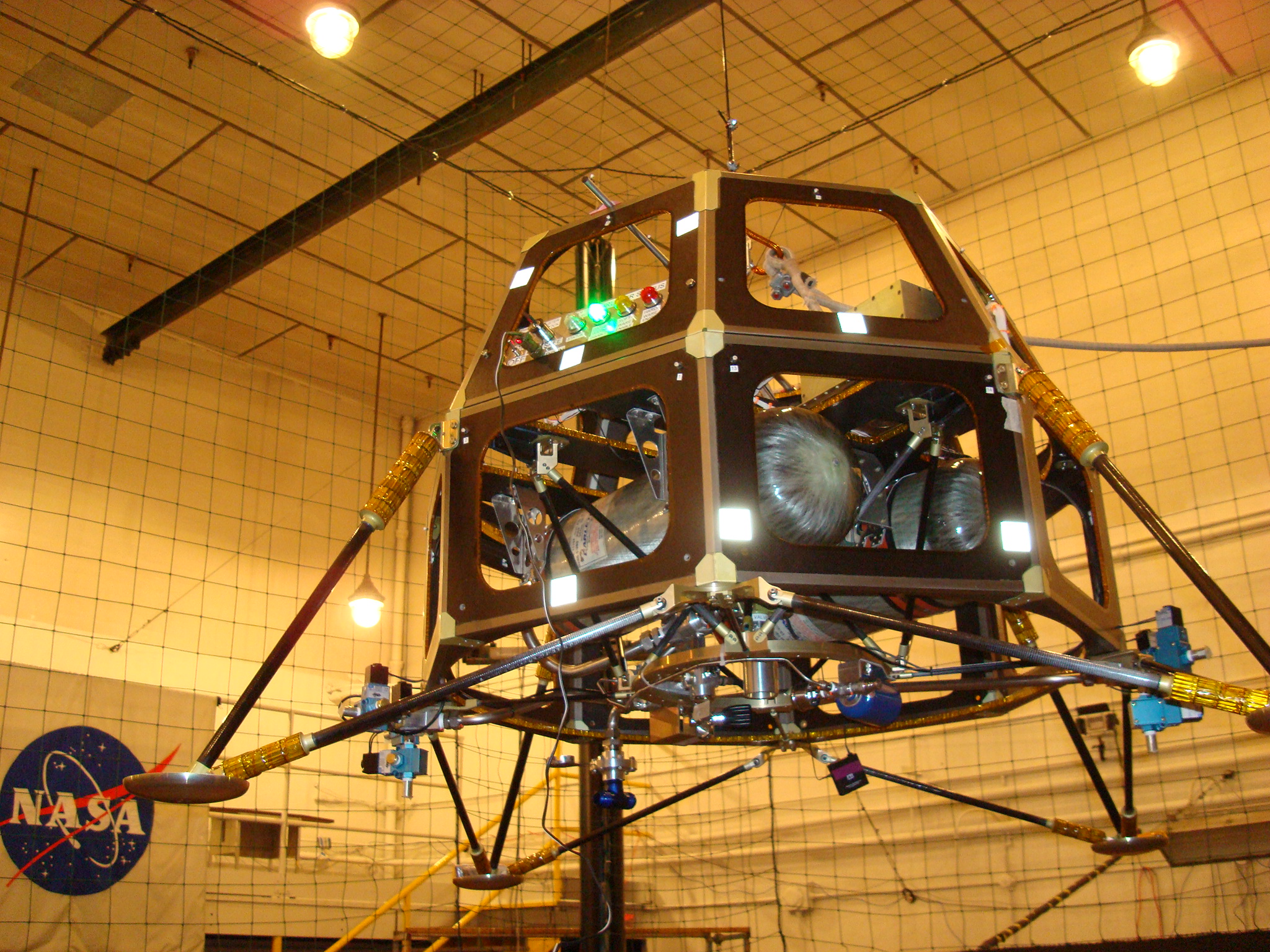
Teams from around the world have been competing to win the global Google Lunar XPRIZE race to the Moon for close to a decade, each building a privately-funded robotic spacecraft and mission to be the first to land on the lunar surface—with little or no government assistance (90 percent of the funding must be private). The challenge aims “to foster innovation and entrepreneurship in space through low-cost, efficient access to the moon,” with each of the 16 teams from the United States, Italy, Malaysia, and elsewhere having to secure launch contracts by the end of 2016, with the deadline for the Moon being Dec. 31, 2017.
The non-profit Israeli team SpaceIL announced just two months ago that they have secured their launch contract to fly and land the world’s first private lunar mission. Now, the American company Moon Express has had their launch contract officially verified by XPRIZE as well, making the California-based company only the second team confirmed to move forward for a 2017 private space race to land on the Moon.

“We are extremely proud to officially confirm receipt and verification of Moon Express’s launch contract,” said Chanda Gonzales, senior director of the Google Lunar XPRIZE. “At XPRIZE, we believe that the spirit of competition brings about breakthroughs that once seemed unimaginable or impossible, and so it thrills us to now have two Google Lunar XPRIZE teams with verified launch contracts attempting missions to the moon in 2017. The new space race is truly on!”
The remaining 14 teams have until Dec. 31, 2016, to also secure their launch contracts in order to move forward in the competition with Moon Express and SpaceIL.
A place in the history books and a $20 million Grand Prize awaits the first team to soft-land an unmanned spacecraft on the Moon, travel 500 meters (1640 feet) across the surface, and send high-resolution images and video back to Earth. Another $10 million will be awarded for other prizes as well, bringing the total dollar worth of the Google Lunar XPRIZE to $30 million.
“We applaud Google and XPRIZE for setting up such a visionary competition, and we’ve got our eyes on the prize,” said Moon Express co-founder and CEO Bob Richards. “Our long-term goal is to unlock lunar resources for the benefit of humanity, and we are thrilled to have our contract in place with Rocket Lab allowing us to provide low-cost missions to the moon for science and commerce.”
SpaceIL will launch to the Moon aboard a SpaceX Falcon-9 booster as a secondary payload, but Moon Express will launch their spacecraft, the MX-1E lunar lander, with the Los Angeles-based company Rocket Lab USA, riding on their 52.5-foot-tall (16-meter) two-stage Electron rocket from a still undetermined launch site in either New Zealand or the United States (Rocket Lab USA is already working with Alaska Aerospace Corporation (AAC) to provide range safety support for their upcoming Electron launches from Kodiak Island in 2016).
The solar-powered MX-1E spacecraft itself is small, weighing just 1,320 pounds (600 kilograms) when fueled for launch. It’s about the size of a coffee table, but its design offers enormous potential. A single-stage spacecraft, the MX-1 will use hydrogen peroxide as a primary fuel in a bi-propellant propulsion system bolstered by kerosene for its Earth departure and Moon arrival burns. The spacecraft’s design is lightweight because the company is not using the typical “bus” structure most satellites employ; instead the vehicle’s fuel tanks themselves serve as the structure, and the MX-1 will actually use an empty fuel tank as its “landing legs,” which itself is designed to cushion the blow by collapsing once it hits the lunar bullseye.

“Moon Express is building disruptive technologies that will forever change the cost of access to space, including the asteroids and even the moons of Mars,” said Moon Express Co-Founder and Chairman Naveen Jain. “We are now taking advantage of exponential technology like 3D printing and inexpensive sensors to collapse the capital needed to access the moon. Coupling these technological advancements with today’s news about our Rocket Lab launch contract is a huge step forward for us in opening whole new markets for space exploration.”
“We want to unlock not just the mysteries, but the resources of the moon to benefit all humanity,” said Richards. “We’re preparing to live off the land on the moon, because there’s water there.”
Moon Express has already put their MX-1 prototype to work quite a bit at NASA’s Kennedy Space Center in Florida, using facilities and the automated landing and hazard avoidance technology, or ALHAT field at the Shuttle Landing Facility (SLF), to perform initial lander test development under NASA’s Lunar Cargo Transportation and Landing by Soft Touchdown (CATALYST) initiative.

Activity at the ALHAT field began last year when the Moon Express team transported the first MX-1 prototype out to the ALHAT pad and successfully pressurized its tanks up to 110 percent of maximum expected operating pressure (MEOP). The vehicle’s guidance, navigation, control, and operation were checked during initial testing as well, along with static tests of the vehicle’s hydrogen peroxide thrusters, star tracker, and some of its navigation controls. Tethered landing tests and fuel tank tests were conducted as well.
“Following the Oct-Dec test campaign, which culminated in our $1M GLXP Lander System Milestone Award as the only team to demonstrate their lander in flight tests, we engaged in another 3 months of flight testing at the KSC SLF between January and March this year,” said Richards today in response to an AmericaSpace inquiry.
Numerous other tests were scheduled for this year, too, along with testing of the spacecraft’s GNC software and some of the flight avionics that are being prepared for flight vehicle testing.
“Moon Express has made singular progress in the Landing Milestone Prize category,” said Robert K. Weiss, vice chairman and president, XPRIZE. “They were the only team to flight test a prototype of their lander. This is an essential step in the development of extra planetary spacecraft. Their innovative approach also utilizes a very compact spacecraft structure allowing for greater secondary launch opportunities.”
During the vehicle flight testing, Moon Express successfully proved out the fundamental design characteristics of the lander design, achieving a highly stable attitude control, solid propulsion performance, and flight profiles confirming the vehicles’ landing and mobility capabilities consistent with the company’s risk reduction goals and the requirements of the Google Lunar XPRIZE.
Earlier this year, Moon Express signed an agreement to use the historic Space Launch Complex-36 at Cape Canaveral Air Force Station for MX-1 spacecraft development and flight operations.
“While we maintain facilities at the SLF, our engineering staff and test operations have been relocated to our SLC-36 facility,” said Richards. “We are currently in engineering design and subsystem development mode, building our lessons learned in the first flight tests into the new configuration of the MX-1, and optimizing it for the Electron launch vehicle.”
Moon Express plans to work with three prototype landers, the first of course having been used in initial testing at KSC at the turn of 2014, but the other two MX-1 test articles have not been built yet.
“We will be testing the next iteration of our rocket engines Q1 next year, and testing the new configuration of the vehicle in Q2,” says Richards.
“We are honored to have an opportunity to establish permanent operations at Cape Canaveral SLC-36, at the place where the U.S. first went to the Moon,” said Richards at the time the agreement was announced. “The Moon is rising again in Florida thanks to the unequivocal support of Space Florida, NASA, and the USAF 45th Space Wing in helping us create a home for manufacturing, integrating, and testing our lunar lander test vehicles and spacecraft.”
While Moon Express has its sights set on the first private lunar landing in history, their vision goes far beyond that. According to the commercial space company’s website, “Moon Express is driven by long-term goals of exploring and developing lunar resources and short-term business on-ramps of providing lunar transportation and data services for government and commercial customers.”
Earlier this year two other teams, Astrobotic from the U.S. and Hakuto from Japan, announced that they each had signed with SpaceX for a late 2016 launch themselves. However:
“While what they announced is very exciting indeed, they have not yet initiated the verification process with XPRIZE,” said XPRIZE Senior Director Chanda Gonzales in response to a recent AmericaSpace inquiry.
Something else to keep in mind: Considering the months of delays stemming from the loss of the SpaceX/NASA CRS-7 Dragon and Orbital ATK / Antares Cygnus ISS resupply missions over the last year, one has to wonder if XPRIZE would extend their competition deadline if potential delays on the rocket-side of things caused a launch slipping past 2017.
“While we do want the teams to be successful, we have no plans on extending the 2017 deadline,” said Gonzales.
.



VIDEO: Moon Express first flight tests of its MTV-1X prototype lunar lander
VIDEO: Interview with Moon Express CEO Bob Richards at KSC
.
Be sure to “Like” AmericaSpace on Facebook and follow us on Twitter: @AmericaSpace
.






Thank you Mike Killian for the informative Moon Express article!
I thought this sentence was particularly useful for anyone contemplating building future large Lunar Landers: “A single-stage spacecraft, the MX-1 will use hydrogen peroxide as a primary fuel in a bi-propellant propulsion system bolstered by kerosene for its Earth departure and Moon arrival burns.”
Dense, non-toxic, easy to store, non-cryogenic, and with a modestly high Isp makes the combination of hydrogen peroxide and kerosene propellants quite useful for long Lunar missions or low-cost launchers going uphill into LEO.
Transferring and the long-term storing of hydrogen peroxide and kerosene propellants at the ISS, or other space stations, should be quite doable and relatively low risk operations.
Certain additives mixed with kerosene can significantly improve the delta V performance for spacecraft with hydrogen peroxide/kerosene powered rocket engines.
In ‘NOVEL ORGANOMETALLIC PROPELLANTS FOR HYPERGOLIC APPLICATIONS’ by T. L. Pourpoint and J. J. Rusek we find: “The fuels of interest in this study are those designed around alkaline metallic species which render existing hydrocarbon fuels reactive with Rocket Grade Hydrogen Peroxide (RGHP) while maintaining exceptional energy. The proposed fuels have delta V and energy density values greater than NTO/MMH bipropellants.”
Hydrogen Peroxide is not such great stuff. It is actually pretty toxic James.
It’s much denser than liquid oxygen. That means a smaller oxygen tank if you use aluminum as a fuel or fuel additive. Remember that aluminum can burn with H2O as is done in ALICE types of rockets.
In general hydrogen peroxide is easier to handle. No boil off. Relatively easy to store for a year or more if you keep it just above the freezing temperature of water.
Kerosene is also easy to store at Lunar polar bases where temperatures usually stay close to -55 degrees Centigrade.
Heating of the propellants can be done using lightweight RTG heaters or solar powered heaters.
Luckily, there are some polar regions that have nearly constant 24/7 ‘eternal light’ from the Sun because the Moon, unlike the Earth, ‘stands’ or rotates in a nearly upright position. Or we could say the Moon has a low inclination.
Cooling cryogenic propellants on the Moon during long ‘hop’ exploration missions would probably be much more difficult than keeping non-cryogenic propellants warm.
Note also that H2O2 would be easy to make on the Moon and could be used alone as a mono-propellant as is noted in the above ‘Moon Express’ article. H2O2 is probably the first propellant we will make on the Moon because it also offers a good non-cryogenic way to store both oxygen and energy.
There is some indication in the research that frozen H2O2 may be produced naturally by Galactic Cosmic Rays interacting with H2O ice. If that is true, finding a polar deposit of mixed H2O and H2O2 would be a real natural resource gift.
And with the proper additive (see ‘NOVEL ORGANOMETALLIC PROPELLANTS FOR HYPERGOLIC APPLICATIONS’) as a very high concentration in the kerosene fuel, an Isp of probably over 400 should eventually be available when using H2O2, or hydrogen peroxide, as the oxidizer.
Kerosene can eventually be made on both the Moon and Mars.
Yes propane, methane, or even hydrogen could probably be used as the ‘carrier’ of the high Isp additive, however the boil off problems would still remain on long Lunar surface equatorial missions with these particular cryogenic propellants.
Note also, the Constellation Program’s Altair Lander had two stages and propellants that were delivered via pressure fed systems which makes for tanks that are heavy, and thus the benefit of using dense propellants increase in such pressure fed rocket engine systems. Smaller and thus lighter pressurized tanks improves the mass ratio. And the mass ratio is important in gaining delta-v and making the Lander smaller.
From Wikipedia ‘Altair’ We read,
“Altair intended to utilize current cryogenic technologies for the descent stages and hypergolic technologies for the ascent stage. The Apollo LM, as advanced in both computer and engineering technology in its day, used hypergolic fuels in both of its stages, chemicals that combust on contact with each other, requiring no ignition mechanism and allowing an indefinite storage period.”
Decomposed H2O2 is hypergolic with kerosene. What a sweet propellant combination for a highly reliable pressure fed rocket engine on a Moon Express Lander!
“Their goal for getting boots on the ground on Mars is the 2040s or 50s.” From: “Will NASA Really Take Humans to Mars in the 2030s Like The Martian Movie?” on 12/12/2015 By Alejandro Rojas.
What a big surprise that must be for some folks, including the President. The Russian experts suggested the 2050s for human Mars missions several years ago.
Thus will the SLS and Orion be doing Lunar missions in the 2020’s, 2030s, 2040s? Sounds like it to me.
Who is going to build the Lunar Landers for our astronauts?
Maybe Moon Express and Golden Spike!
Lithium hexahydridoaluminate (or Lithium Aluminum Hexahydride, or Li3AlH6) has a density of about 1.0 g/cm3. And it has an optimized vacuum Isp of 469 and an optimized vacuum density Isp of 588 when burned with H2O2, or Rocket Grade Hydrogen Peroxide (RGHP).
H2O2 has a density of about 1.450 g/cm3 at 20 degrees Centigrade.
And the commonly used and easy to store propellants nitrogen tetroxide and monomethyl hydrazine, often referred together as NTO/MMH, have when burned together an an optimized vacuum Isp of 364 and an optimized vacuum density Isp of 458.
“Swift Enterprises, Ltd. is investigating advanced non-toxic fuels that could be added to kerosene with significant delta V and energy improvement, while maintaining short ignition delay parameters.” from page 1.
“Of particular interest is Li3AlH6 used in combination with anhydrous hydrogen peroxide. This propellant combination has performance characteristics 30% greater than NTO/MMH while maintaining virtually the same combustion chamber temperature.” from page 6.
The quotes and most of the above information are from: ‘NOVEL ORGANOMETALLIC PROPELLANTS FOR HYPERGOLIC APPLICATIONS’ by T. L. Pourpoint and J. J. Rusek Swift Enterprises, Ltd., West Lafayette, Indiana, U.S.A.